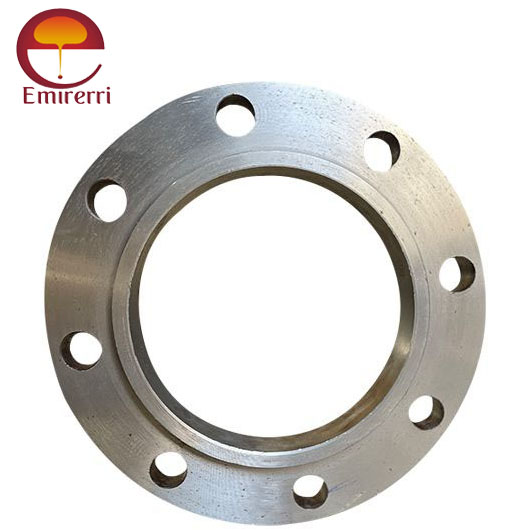In the world of piping and plumbing, various components are essential for ensuring the integrity and efficiency of systems that transport liquids and gases. Among these components, flanges play a critical role. One particular type of flange that stands out due to its unique design and application is the lap joint flange. In this blog post, we'll explore what a lap joint flange is, its features, benefits, and typical applications.
Understanding Flanges
Before diving into the specifics of a lap joint flange, it's important to have a basic understanding of flanges in general. Flanges are mechanical components used to connect pipes, valves, pumps, and other equipment to form a piping system. They provide easy access for cleaning, inspection, and modification. Flanges are typically bolted together and sealed with gaskets to prevent leaks.
What is a Lap Joint Flange?
A lap joint flange also known as lapped flange or lapped joint flange is a type of flange that is used in conjunction with a stub end. Unlike other flanges, the lap joint flange does not have a raised face. Instead, it features a flat surface and is designed to slide over the pipe. The actual sealing surface is the stub end, which has a machined face. The flange itself does not come into contact with the fluid inside the pipe, making it less susceptible to corrosion.
Key Features of Lap Joint Flanges
- Two-Part Design: The lap joint flange consists of two parts – the flange and the stub end. The flange is free to rotate around the pipe, which aids in alignment during installation.
- Ease of Installation: The ability to rotate the flange around the pipe makes it easier to align bolt holes with those of the mating flange or fitting. This flexibility simplifies the installation process, especially in tight or complex piping systems.
- Reduced Stress: Since the lap joint flange does not bear the brunt of the piping stress, it is less likely to develop stress-related issues. The stub end, which is typically made from a more corrosion-resistant material, handles the pressure and contact with the fluid.
- Cost-Effective: In systems where corrosion resistance is critical, using a lap joint flange with a stub end made from a more expensive material can be more cost-effective than using a full flange made from the same material.
Lap Joint Flange Use
- Versatility: Lap joint flanges can be used in a variety of applications, including high-pressure and high-temperature environments, due to their ability to accommodate different materials for the flange and stub end.
- Maintenance and Replacement: The ease of alignment and installation also translates to easier maintenance and replacement of components. If a section of the piping system needs to be replaced or inspected, the lap joint flange allows for quicker disassembly and reassembly.
- Corrosion Resistance: By using a more corrosion-resistant material for the stub end, the overall system's durability is enhanced without the need for expensive materials for the entire flange.
Typical Applications of Lap Joint Flanges
Lap joint flanges are commonly used in situations where frequent disassembly is required, such as in systems that require regular maintenance or cleaning. Some typical applications include:
- Food and Beverage Industry: For piping systems that need to be cleaned regularly to maintain hygiene standards.
- Pharmaceutical Industry: Where the purity of transported fluids is crucial, and pipes need to be frequently inspected and cleaned.
- Petrochemical Plants: In systems where different sections of piping need to be replaced periodically due to wear and tear from harsh chemicals.
- Water Treatment Facilities: Where pipelines are subject to corrosion and need frequent maintenance.
Conclusion
Lap joint flanges offer a versatile and practical solution for many Stainless Steel Pipe Fitting Systems. Their unique design, which allows for easier alignment and installation, makes them particularly useful in applications that require frequent maintenance and replacement. By using corrosion-resistant materials for the stub end, these flanges provide a cost-effective and durable option for industries that deal with aggressive fluids or require stringent hygiene standards. Whether in the food industry, pharmaceuticals, or petrochemicals, lap joint flanges play a vital role in ensuring the efficiency and integrity of piping systems.






Comments